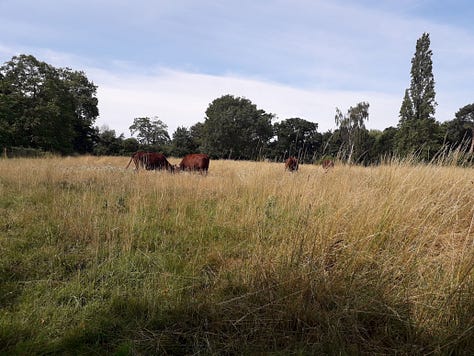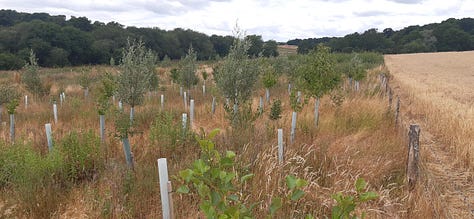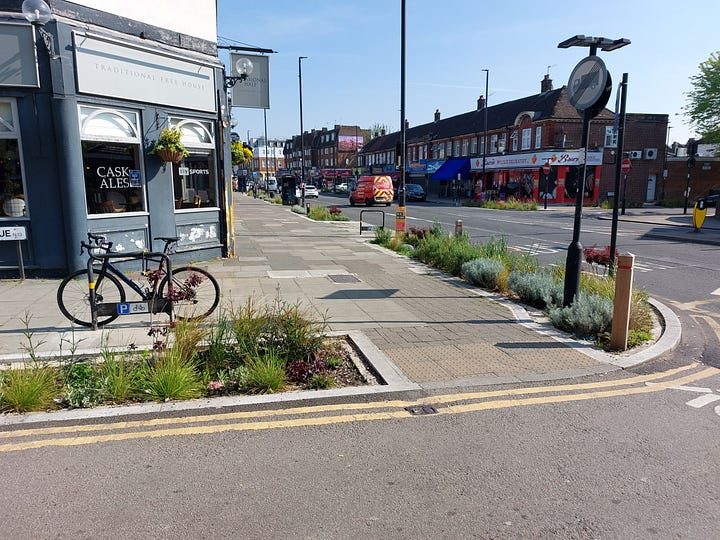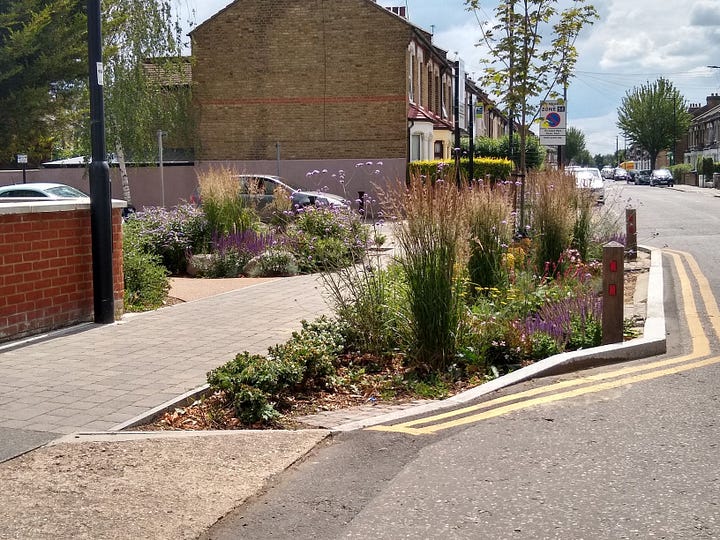The image above shows before and after the restoration of a small urban river in the north London borough of Enfield. It represents a pioneering approach to building climate resilience while boosting biodiversity and beauty in cities - by taking a rewilding approach.
The image on the left will be familiar to many urbanites - a watercourse choked by concrete. Through the centuries, as cities grew, we tamed rivers into channels and pipes in an attempt to control flooding and the spread of disease.
But this had unintended consequences. Biodiversity collapsed as species-rich wetlands and riparian vegetation disappeared. Channelising rivers speeds up water flow, which can worsen flooding downstream. And urban residents lost the beauty and nature connection that these habitats provide.
The watercourses team at London Borough of Enfield, inspired by ambitious projects like Knepp, have been ‘rewilding’ their watercourses, streets and surrounding Green Belt land.
I sat down with Ian Russell and Jamie Kukadia who are leading these projects on the Green Urbanist podcast to discuss:
'Rewilding Enfield' - rewilding urban streets, parks and rivers.
Nature-based flood resilience and sustainable drainage versus traditional engineering.
Reintroducing beavers to London.
The benefits of conservation livestock grazing in parks and green belt.
Advice for others who want to take an urban rewilding approach.
Episode #108: (WILD) Rewilding for Urban Flood Resilience
Listen to the episode on the links below:
Here’s some more photos of the projects we talk about in the podcast.





p.s. don’t miss my free training: Urban Sustainability in 5 Case Studies



